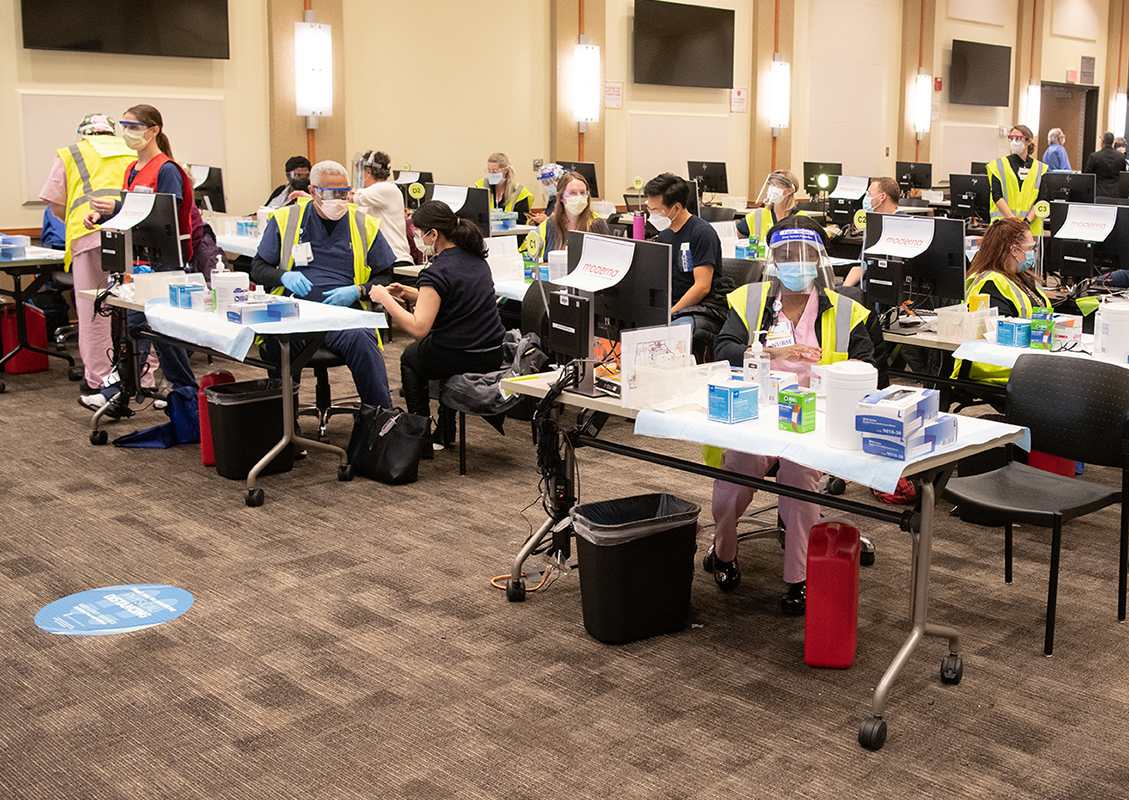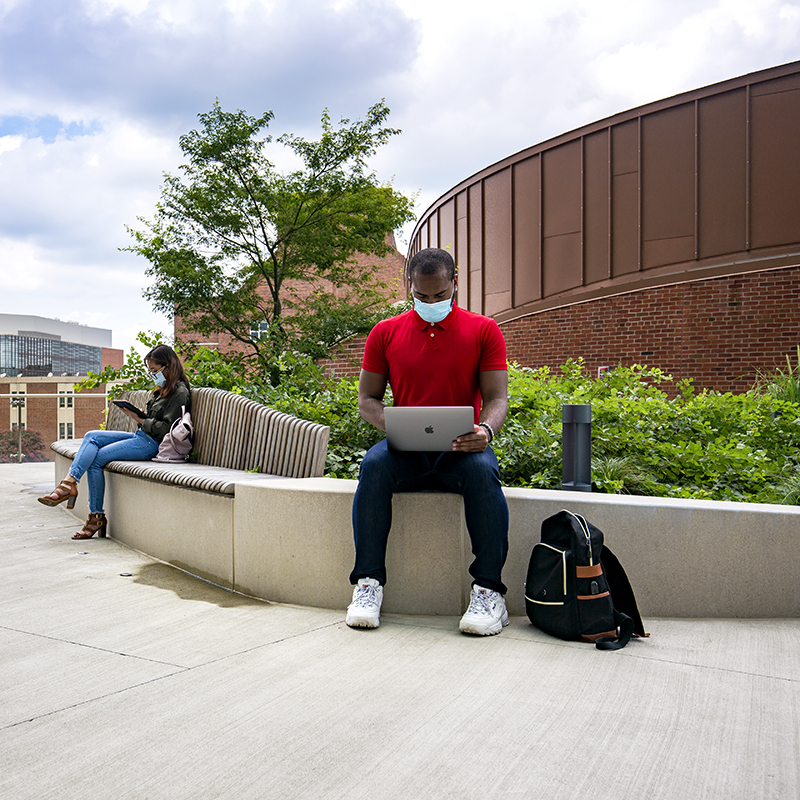News Story
Jeffrey Herrmann's predictive modeling work
Helping higher education institutions make good COVID-19 decisions
Professor Jeffrey Herrmann (ME/ISR) is the principal investigator for Protecting University Communities from COVID-19 with Model-Based Risk Management, a two-year NSF grant that began in August 2020 to help higher education institutions navigate COVID-19 decisions. Like every other segment of society, colleges and universities have been forced to make critical decisions with limited information, constrained resources and no road map. The choices they are making about how to best serve their students and conduct classes have led to significant health and financial implications.
Along with co-PIs Professor Donald Milton (Applied Environmental Health) and Professor Hongjie Liu (Chair, Epidemiology and Biostatistics) in the School of Public Health, Herrmann is developing novel mathematical and epidemic models that can estimate the trajectory of coronavirus infection, the effectiveness of mitigation strategies and predict the economic impact of different risk management options. With this information, the researchers, who are experienced in analyzing infectious disease epidemics, formulating operational solutions, using models to predict disease spread down to the county level and evaluating social distancing policies, are developing model-based decision support tools to help university administrators and public health officials evaluate their options.
“These models will help decision-makers understand both the advantages and disadvantages of different options so that they can select appropriate strategies for teaching and learning and research to occur safely,” said Herrmann. “Using models that can estimate the risks and economic impacts will enable decision-makers to balance risk reduction, costs, and other objectives in a rational way.”
Read more about the project here.
Free resources available from Herrmann’s original clinic planning work
Software tools and other resources are available free of charge at this online resource to help public health officials model and design clinics for more efficient and effective processing under high demand.
Herrmann developed the mathematical and simulation models of mass dispensing and vaccination clinics (also known as points of dispensing) in research conducted from 2005–2013 with the U.S. Centers for Disease Control and Prevention (CDC); the National Association of County and City Health Officials (NACCHO), and public health officials from the Montgomery County, Md., government.
The decision support tools coming from this research can help emergency preparedness planners design clinics that have enough capacity to serve residents quickly while avoiding unnecessary congestion.
The clinic planning software—available at no charge—includes:
- Clinic Planning Model Generator, which generates a Microsoft Excel workbook for point of dispensing planning
- Clinic Surge Planning Model, specifically designed for short-duration, high-volume clinics that anticipate a surge of patients when the clinic opens
- Alternative Care Site Planning Model, which helps public health officials evaluate the resources required to staff and equip alternative care sites in multiple scenarios
- Vaccine Allocation Model, which determines how many people in various target groups can receive treatment if a limited number of vaccinations is available
Although originally designed for earlier scenarios such as the H1N1 flu, the principles behind the models and support tools are applicable to the emergency clinics being set up in the COVID-19 pandemic.
“When public health officials are planning mass testing or mass vaccination to fight COVID-19, they can use these mathematical models and computer simulations to help them design operations and facilities that have enough capacity so that people don’t have to wait very long,” says Herrmann.
Published January 1, 2021







